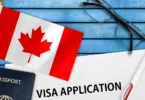The U.S. EB-3 Work Visa offers a pathway to permanent residency for skilled workers, professionals, and other foreign employees. This visa category is particularly valuable for individuals seeking stable employment and long-term opportunities in the United States. This article will provide a detailed overview of the U.S. EB-3 Work Visa and essential tips for applicants.
Advertisements
What is the U.S. EB-3 Work Visa?
The EB-3 (Employment-Based Third Preference) visa is a category within the U.S. immigration system that allows employers to sponsor foreign workers for permanent residency.
The EB-3 visa is ideal for skilled workers, professionals, and unskilled workers (other workers) who meet specific qualifications and are willing to fill roles that American workers are unable to fulfill.
This visa is part of the broader employment-based green card categories, making it a popular choice for those seeking to live and work in the United States permanently.
Eligibility Requirements for the EB-3 Visa
The EB-3 visa is divided into three subcategories:
- Skilled Workers: Requires at least two years of job experience, education, or training in a skilled occupation. This category is for positions that require a specific skill set that is not readily available in the U.S. workforce.
- Professionals: Applicants must possess a U.S. bachelor’s degree or a foreign equivalent. The job offered must require a degree, and the individual must meet the educational criteria.
- Other Workers (Unskilled Workers): This subcategory is for those who perform jobs requiring less than two years of training or experience. Common roles include agricultural and seasonal work. While this subcategory has lower qualification criteria, the wait time for visa processing can be longer.
Application Process for the U.S. EB-3 Visa
Securing an EB-3 visa involves several steps, starting from the employer’s side and concluding with the applicant’s adjustment of status. Here is a breakdown of the process:
Step 1: Labor Certification (PERM)
- The U.S. employer must obtain a Permanent Labor Certification (PERM) from the Department of Labor (DOL). This certification verifies that no qualified U.S. workers are available for the job and that hiring a foreign worker will not negatively affect the wages and working conditions of U.S. workers.
Step 2: Filing Form I-140 (Immigrant Petition for Alien Worker)
- After receiving PERM approval, the employer files Form I-140 on behalf of the foreign worker. This petition must include evidence of the worker’s qualifications, such as educational certificates, proof of work experience, and any licenses required for the job.
Step 3: Priority Date and Visa Bulletin
- Once the I-140 petition is approved, the applicant’s “priority date” is established. The priority date determines the applicant’s place in line for an available visa number. The U.S. Department of State publishes a monthly Visa Bulletin that shows the waiting time for each visa category.
Step 4: Adjustment of Status (Form I-485) or Consular Processing
- If the applicant is already in the U.S., they can file Form I-485 to adjust their status to that of a permanent resident. Applicants outside the U.S. will undergo consular processing at a U.S. embassy or consulate in their home country.
Benefits of the U.S. EB-3 Work Visa
The EB-3 visa offers numerous benefits, making it an attractive option for foreign workers seeking stability in the U.S.:
- Permanent Residency: EB-3 visa holders are eligible for a green card, allowing them to live and work in the United States indefinitely. After five years of continuous residency, they can apply for U.S. citizenship.
- Family Inclusion: EB-3 visa holders can include their spouses and unmarried children under 21 in their application. Spouses are eligible for an Employment Authorization Document (EAD), which allows them to work legally in the U.S.
- Path to Career Advancement: The EB-3 visa provides foreign professionals and skilled workers with opportunities to work for reputable U.S. employers. This experience can significantly enhance their career prospects and open doors to further professional growth.
- Access to U.S. Benefits: Permanent residents can access certain benefits, such as social security, education opportunities, and healthcare options, enhancing their quality of life in the U.S.
Challenges and Considerations for EB-3 Visa Applicants
Despite its benefits, the EB-3 visa process can be challenging. Here are some considerations for prospective applicants:
- Processing Times: The EB-3 visa is known for its lengthy processing times, especially for applicants from countries with a high demand for U.S. visas. Checking the Visa Bulletin regularly is essential to monitor the progress of the priority date.
- Job Offer Requirement: Unlike other visa categories, the EB-3 visa requires a permanent job offer from a U.S. employer. Applicants must ensure that their employer is committed to sponsoring them throughout the process.
- Cost of Application: The EB-3 visa process involves various fees, including PERM certification, Form I-140 filing, and adjustment of status fees. Both the employer and the applicant should be prepared for these expenses.
- Competition for Visa Numbers: As the EB-3 category has a fixed number of visas available each year, applicants may face competition for limited visa numbers, leading to longer waiting times for some countries.
Tips for a Successful EB-3 Visa Application
- Work with an Experienced Immigration Attorney: Navigating the EB-3 visa process can be complex. An experienced immigration attorney can provide valuable guidance, ensuring that all documentation is accurate and timely.
- Maintain Strong Communication with Your Employer: Since the employer plays a crucial role in the EB-3 application process, maintaining open communication is essential. This helps in ensuring that the required steps, such as obtaining the labor certification, are completed without delays.
- Prepare Thorough Documentation: A successful EB-3 visa application relies on proper documentation, including job offers, qualifications, and work experience. Prepare all necessary documents early in the process to avoid delays.
- Monitor Visa Bulletin Updates: Regularly checking the Visa Bulletin helps applicants understand their wait times and plan accordingly. This can be especially useful for those considering transitioning from temporary visas, such as H-1B, to EB-3.
Conclusion
The U.S. EB-3 Work Visa is a viable pathway for skilled workers, professionals, and unskilled workers seeking to achieve permanent residency in the United States. While the process can be complex and time-consuming, the long-term benefits, such as permanent residency and opportunities for family members, make it a worthwhile investment for those committed to building a future in the U.S.
With determination and the right guidance, the dream of living and working in the United States can become a reality through the EB-3 visa.


